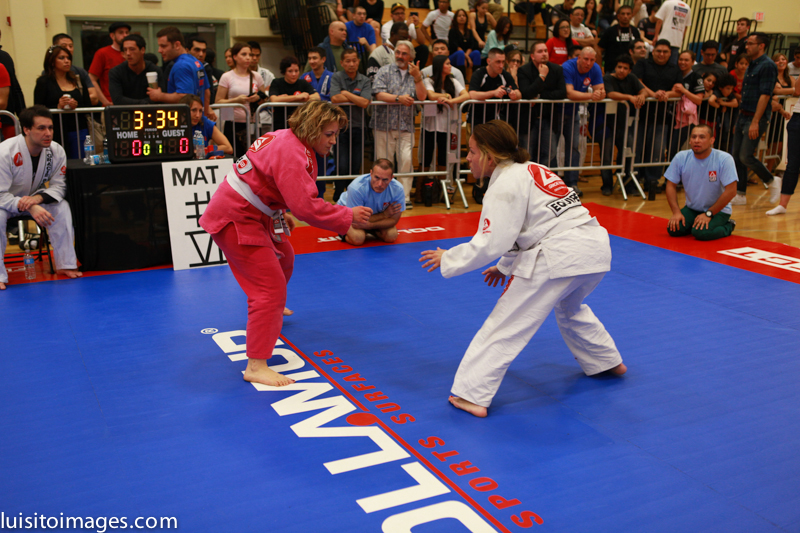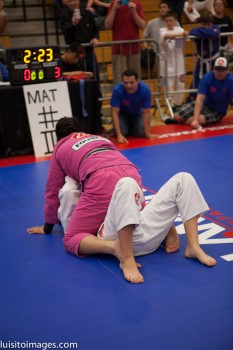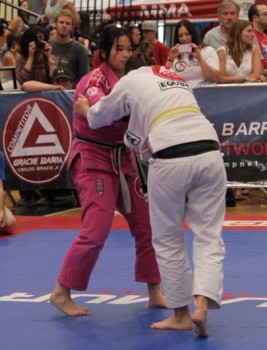Grappling vs Striking Martial Arts
Philosophy
Brazilian Jiu-Jitsu is a grappling martial art similar to Judo or Wrestling, where you learn utilize proper timing, technique, and leverage to control/submit an opponent after closing the distance and taking them to the ground. This goes against the philosophy of most traditional striking martial arts (Karate, Tae Kwon Do) that utilize kicks and punches to incapacitate an opponent. Striking martial arts, such as these, are actually quite limited in their practical application. They are really only effective when there is enough distance to launch an attack and when your opponent is smaller/weaker than you (i.e. a small person trying to punch/kick a 260-pound man is most likely just going to aggravate the situation). Unfortunately, both of these scenarios are quite unlikely in most self-defense situations, and even so, there is always the possibility of your opponent landing a ‘lucky’ strike that incapacitates you, regardless of their striking ability. BJJ’s approach to self-defense greatly minimizes the chances of this happening by taking the fight to the ground where there is no opportunity for the opponent to get ‘lucky’. This philosphy is put so eloquently by RCJ Machado:
“The ground is my ocean, I’m the shark, and most people don’t even know how to swim.”
Training
Another drawback to striking martial arts is that it is near impossible to train with the necessary intensity required to properly master the techniques. Because the striking arts are designed to injure an opponent with kicks and punches, you cannot go very hard while sparring, without great risk of injury. This makes it very difficult to get the proper feel for how quickly things happen in a real fight. As a result, you either have champions forced to retire early because of the damage sustained in training/competition (i.e. Muay Thai Kickboxing) or very impractical form-based training (Karate, Tae Kwon Do) that is simply a water-downed version of the original martial art it now mimics. Because BJJ has little use of strikes, relying instead on chokes, arm locks, and other submission holds, it can be practiced almost exactly the same way it would be in a real fight, without great risk of injury.
Application
Another important difference to distinguish between martial arts is the option of inflicting great bodily harm to an individual. Striking martial arts, by nature of the techniques utilized, require you to do physical harm to your opponent via punching/kicking. There isn’t an option to not injure the individual, which in many cases of self-defense, might have undesirable consequences. This is where BJJ really excels as a martial art. If the person you are facing is a friend who is temporarily out of his senses, you can control him/her without hurting them. However, if you are dealing with a criminal or a deliberate act to injure you or a loved one, you can apply a more suitable level of response. Because of this, BJJ is particularly sought out by people whose job is to subdue individuals without hurting them; such as bar bouncers, policemen and security personnel.
“Nothing is so strong as gentleness. Nothing is so gentle as real strength.” – St. Francis de Sales












